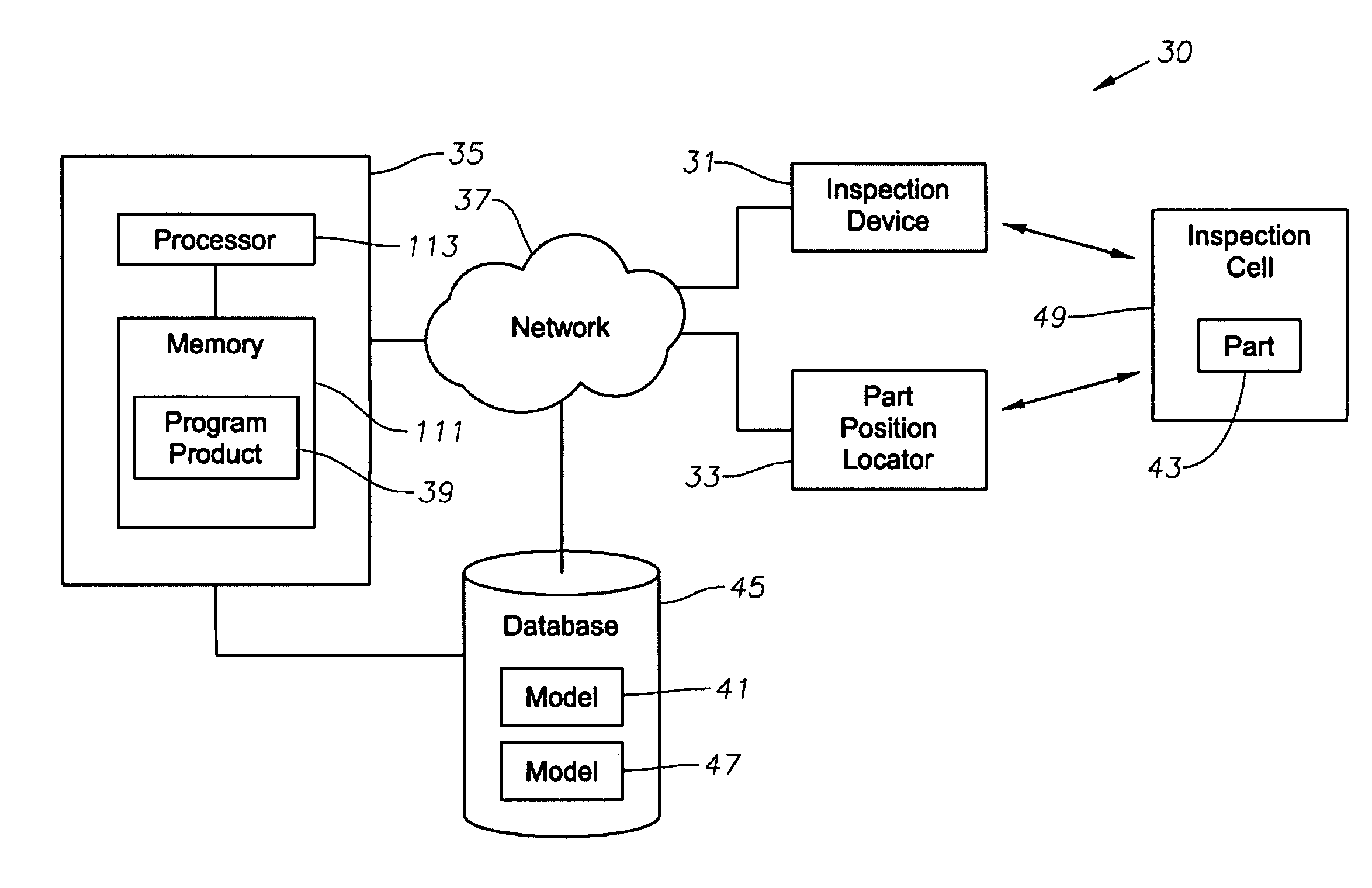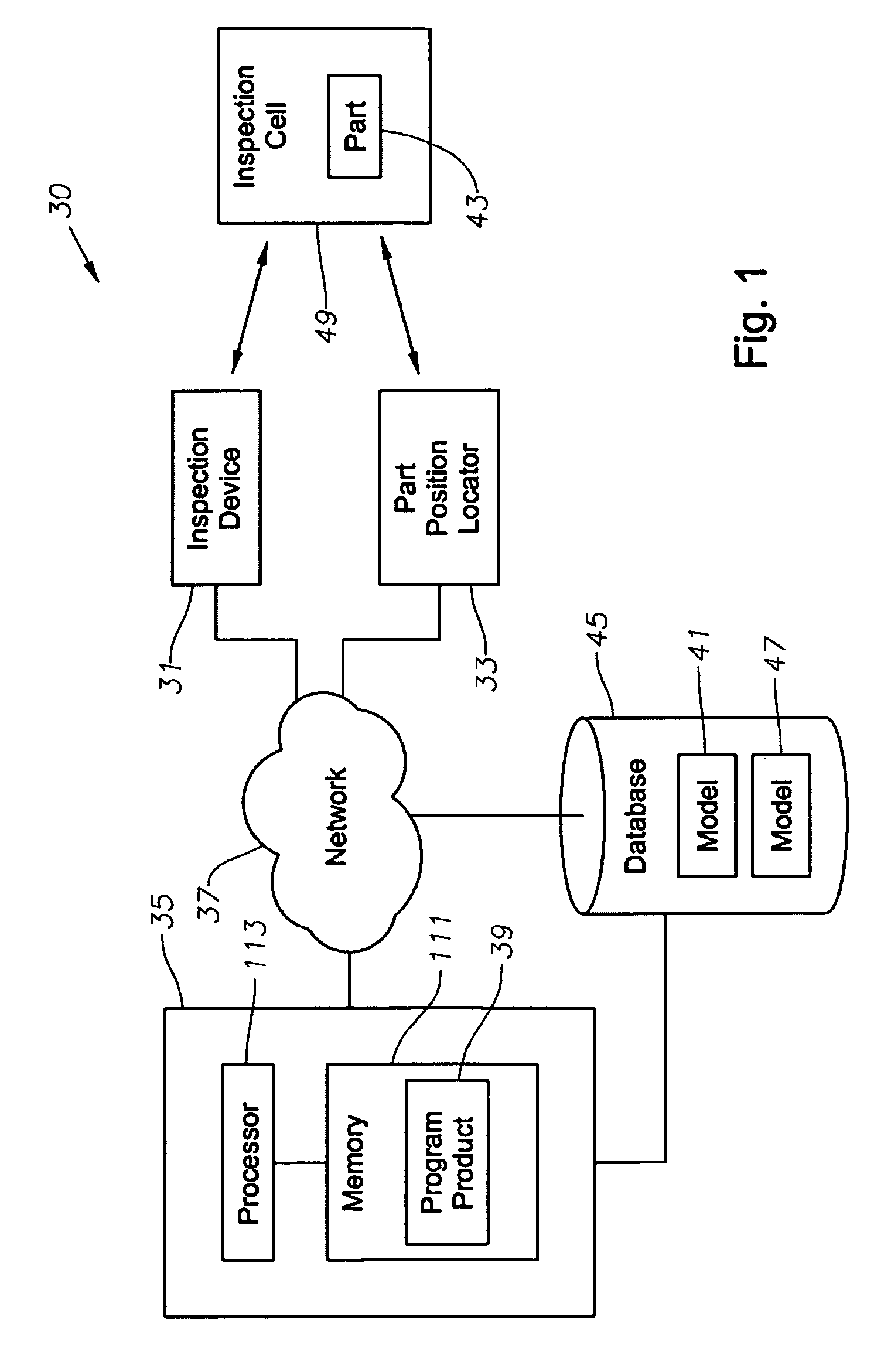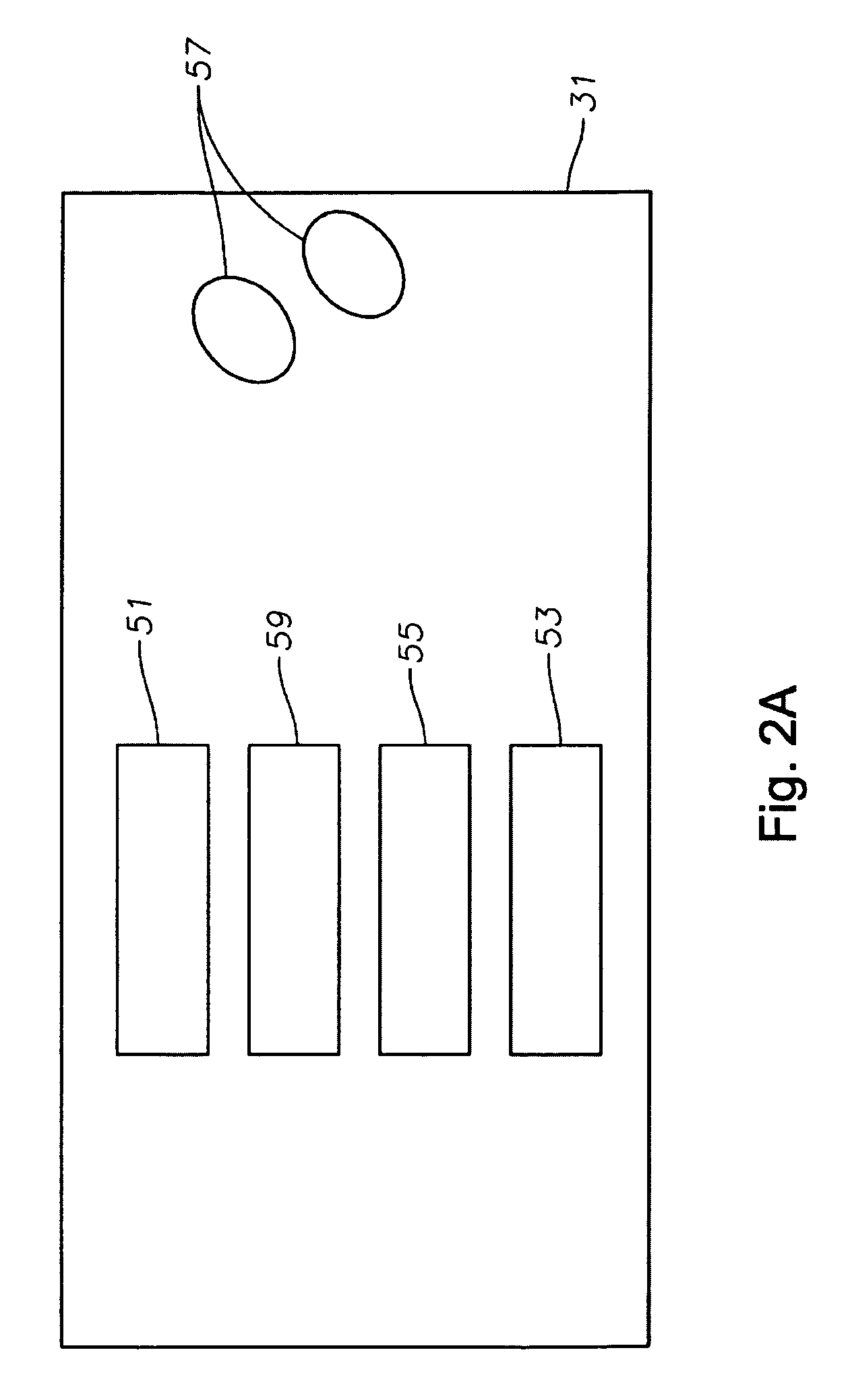System, program product, and related methods for registering three-dimensional models to point data representing the pose of a part
a three-dimensional model and pose technology, applied in the field of three-dimensional scanning, can solve the problems of adversely increasing the manufacturing cost associated with composite structures, requiring strict quality control procedures in manufacturing processes, and expensive conventional nde methods, etc., and achieve the effect of improving the visualization of inspection data
- Summary
- Abstract
- Description
- Claims
- Application Information
AI Technical Summary
Benefits of technology
Problems solved by technology
Method used
Image
Examples
Embodiment Construction
[0030]The present invention will now be described more fully hereinafter with reference to the accompanying drawings, which illustrate embodiments of the invention. This invention may, however, be embodied in many different forms and should not be construed as limited to the illustrated embodiments set forth herein. Rather, these embodiments are provided so that this disclosure will be thorough and complete, and will fully convey the scope of the invention to those skilled in the art. Like numbers refer to like elements throughout.
[0031]Various systems such as non-destructive evaluation systems can use or employ a wide area, imaging device. Such systems also use, for example, a three-dimensional scanner to locate the part within a work cell. The three-dimensional scanner, for example, can create a point cloud of geometric samples (“point data”) on the surface of the part. Such point data can represent the pose of a part in a given environment (“sensor data”). The point data is usual...
PUM
 Login to View More
Login to View More Abstract
Description
Claims
Application Information
 Login to View More
Login to View More - R&D
- Intellectual Property
- Life Sciences
- Materials
- Tech Scout
- Unparalleled Data Quality
- Higher Quality Content
- 60% Fewer Hallucinations
Browse by: Latest US Patents, China's latest patents, Technical Efficacy Thesaurus, Application Domain, Technology Topic, Popular Technical Reports.
© 2025 PatSnap. All rights reserved.Legal|Privacy policy|Modern Slavery Act Transparency Statement|Sitemap|About US| Contact US: help@patsnap.com



